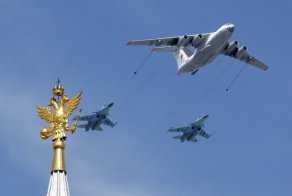 The Russian military intervention in Syria—launched in a great rush just over a month ago — came as a surprise; perhaps not as shocking as the swift occupation and annexation of Crimea, but a surprise nevertheless. But does Russia’s ability to surprise and to project force in Syria prove, as Garret Campbell claims, that Western attempts “to discredit Russian military capabilities” were inaccurate?
The Russian military intervention in Syria—launched in a great rush just over a month ago — came as a surprise; perhaps not as shocking as the swift occupation and annexation of Crimea, but a surprise nevertheless. But does Russia’s ability to surprise and to project force in Syria prove, as Garret Campbell claims, that Western attempts “to discredit Russian military capabilities” were inaccurate?
In fact, the first month of the operation tells us little about Russian military capabilities. It does show that the Russian leadership is prepared to play with military instruments of policy way beyond the limit of, for Western politicians, acceptable risk. This readiness to face big risks constitutes a political advantage of sorts. But it remains unclear that the Russian military is up to the task. There are many looming disasters on the battlefield in Syria, and the Russian military will inevitably take the blame if they come to pass.
Reforms and rearmament
In hindsight, it is striking that at the start of this decade, when the key domestic political guideline in Russia was “modernization” (and foreign policy guideline was “reset”), the only real modernization that happened was that of the armed forces. The military reform launched by Defense Minister Anatoly Serdyukov began just a couple of months after the inglorious “victory” in the August 2008 war with Georgia. His replacement in November 2012 by Sergei Shoigu helped in correcting some mistakes in the incoherent design for reforms and also shifted the focus to combat training. The improved combat readiness, particularly of Russian special forces, made it possible to execute the spectacular operation aimed at taking control over Crimea in March 2014. But many key parts of the military machine still remain under-reformed and untouched by modernization.
- Read more at the Brookings blog Order from Chaos, where the entire text was published 4 November 2015.